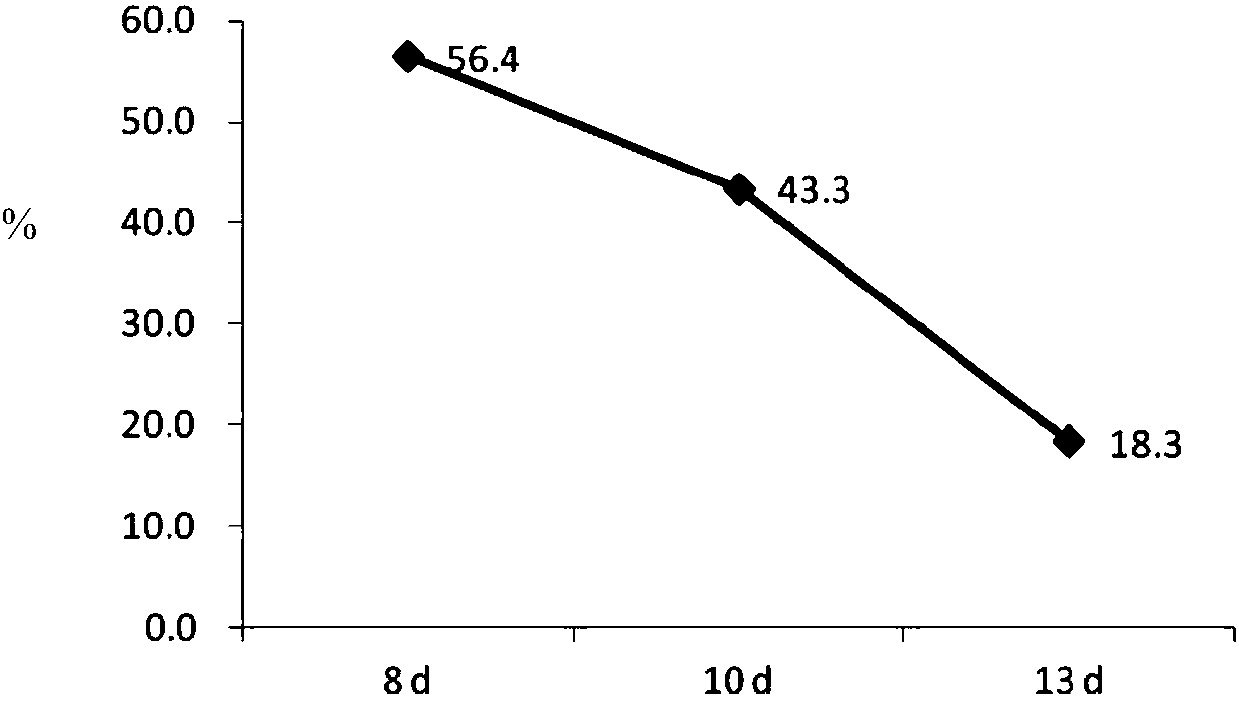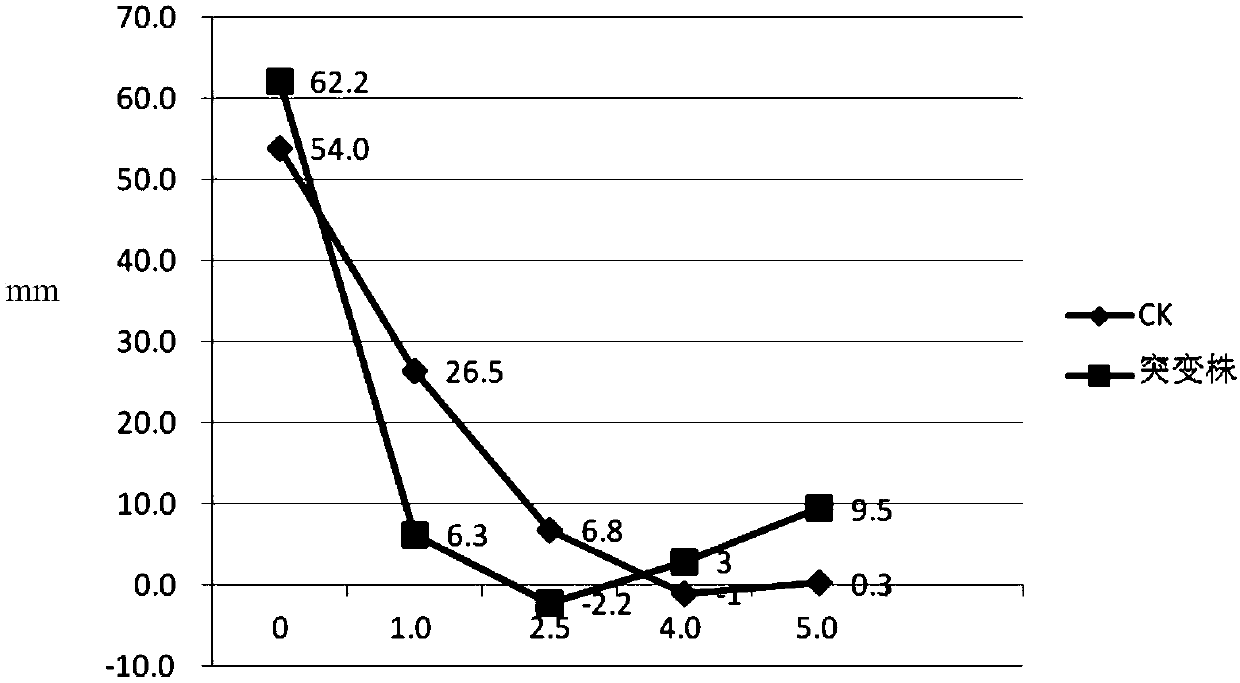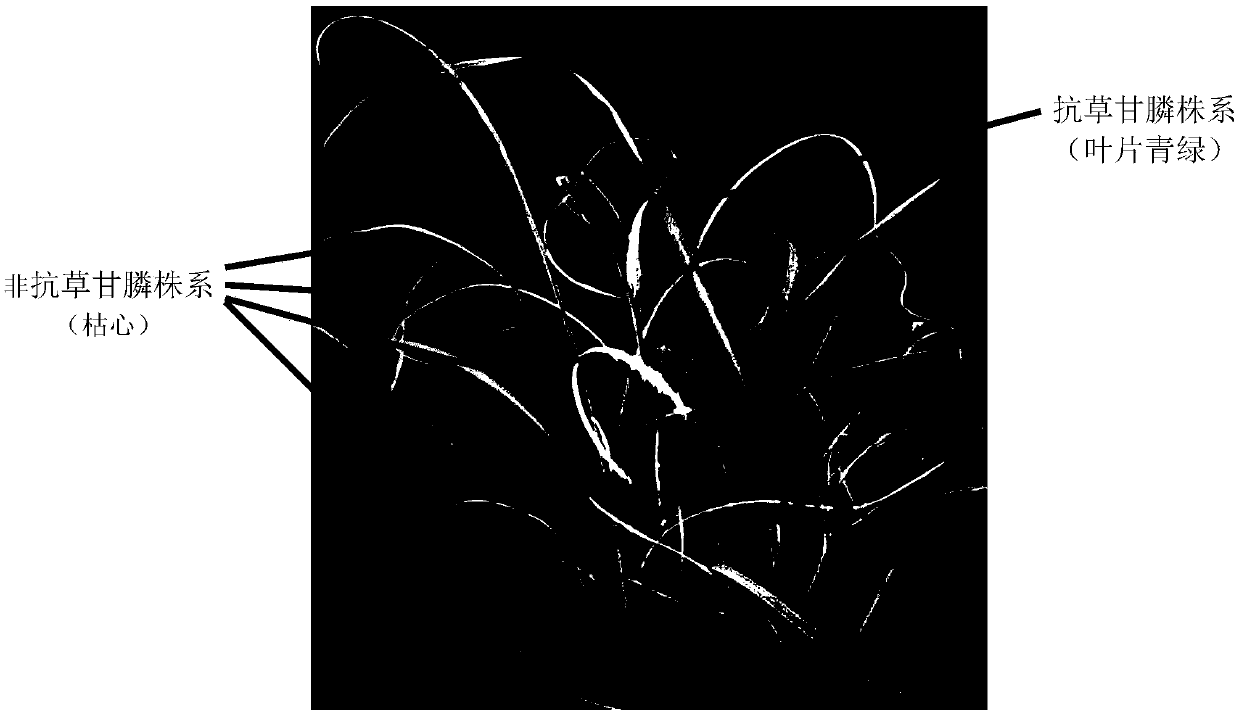Method for high-flux directed mutagenesis of glyphosate resistance of sugarcane through plasma
A plasma and anti-glyphosate technology, applied in horticultural methods, botanical equipment and methods, angiosperms/flowering plants, etc., can solve the inconvenient operation of test tube slant medium, obvious differences in mutagenic effects, and small processing capacity and other problems, to achieve the effect of obvious difference in mutagenic effect, intuitive judgment, and less pollution
- Summary
- Abstract
- Description
- Claims
- Application Information
AI Technical Summary
Problems solved by technology
Method used
Image
Examples
Embodiment 1
[0064] A fine sugarcane cultivar callus initiation
[0065] 1) Preparation of inoculation materials
[0066] After the cane stem grows, cut off the tail tip of the strong cane plant, peel off the outer leaves, disinfect with 75% alcohol for 30 seconds under sterile conditions, cut off the outer layer and both ends of the leaves (leaf sheath), and leave 10mm-50mm above the growth point Young leaves (tender sheaths) are cut into thin slices of about 2 mm, and 1 / 2 ring cut for inoculation.
[0067] 2) Obtaining sugarcane embryogenic callus
[0068] Inoculate the prepared slices in medium CM1, culture them in the dark at 26°C-28°C, 6-8 pieces per dish, induce callus, and then in medium CM1 (MS+2,4-D 2.0 μmol·L -1 + sucrose 30g·L -1 +Agar 8g·L -1 , pH value 6.2) subcultured 1-2 times, 6-8 pieces per dish, to make it produce embryogenic callus.
[0069] B high-throughput arrangement
[0070] The sugarcane embryogenic callus subcultured 2-3 times was clamped into small pieces ...
Embodiment 2
[0087] On July 15, 2015, the HPD-280 plasma machine was used to mutate the embryogenic callus of Yuetang 93-159 sugarcane. The mutagenesis power was set to 140W, and the irradiation mutagenesis time was 80s, 100s, and 120s, respectively. , 140s, 160s, 180s. Other operations in embodiment 2 are all the same as embodiment 1. The survival rate and mutation rate of embryogenic callus in each group were detected.
[0088] The test results are shown in Table 1. Among them, the survival rate of the embryogenic callus treated at 120s was the highest, 18.3%, which was significantly higher than that of other treatments, and it could differentiate into adult plants after two rounds of glyphosate selection, with a mutagenesis rate of 2.50%. .
[0089] Table 1 Plasma mutagenesis of Yuetang 93-159 sugarcane embryogenic callus under the conditions of power 140W and treatment time 80-180s
[0090]
[0091]
[0092] Note: Different lowercase English letters after the data in the same ...
Embodiment 3
[0096] On May 4, 2016, the HPD-280 plasma machine was used to mutate the embryogenic callus of Yuetang 93-159 sugarcane, and the irradiation time was 120s. The mutagenic power was set to 140W, 170W, and 200W, respectively. Other operations in implementation 3 are the same as implementation 1. The survival rate and mutation rate of embryogenic callus in each group were detected.
[0097] The test results are shown in Table 2. Among them, the survival rate of embryogenic callus treated with power 140W was the highest, which was 62.4%. It is 140W, reaching 2.77%.
[0098] Table 2 Plasma mutagenesis of Yuetang 93-159 sugarcane embryogenic callus under the conditions of power 140-200W and treatment time 120s
[0099]
PUM
 Login to View More
Login to View More Abstract
Description
Claims
Application Information
 Login to View More
Login to View More - R&D
- Intellectual Property
- Life Sciences
- Materials
- Tech Scout
- Unparalleled Data Quality
- Higher Quality Content
- 60% Fewer Hallucinations
Browse by: Latest US Patents, China's latest patents, Technical Efficacy Thesaurus, Application Domain, Technology Topic, Popular Technical Reports.
© 2025 PatSnap. All rights reserved.Legal|Privacy policy|Modern Slavery Act Transparency Statement|Sitemap|About US| Contact US: help@patsnap.com



